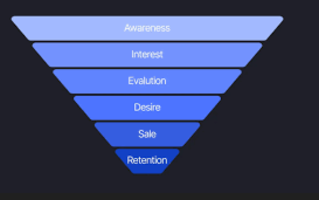Have you ever scrolled through your Facebook feed and stopped at an ad that felt like it was made just for you? That’s how social media advertising can help your business! Maybe it was that perfect pair of shoes you’d been eyeing, or a local restaurant offering exactly what you were craving. That’s the magic of social media advertising at work, and it’s transforming how businesses connect with their customers every single day.
Social media advertising has evolved from being just another marketing option to becoming an absolute necessity for businesses that want to thrive in today’s digital landscape. Think about it for a moment. Your customers are spending hours each day on platforms like Facebook, Instagram, LinkedIn, and TikTok.
They’re not just passively browsing; they’re actively engaging, sharing, and making purchasing decisions based on what they see. This presents an unprecedented opportunity for businesses to meet their audience exactly where they are, with messages that resonate and inspire action.
Understanding Social Media Advertising in Today’s Market
Social media advertising represents one of the most cost-effective and targeted forms of marketing available to businesses today. Unlike traditional advertising methods that cast a wide net and hope for the best, social media platforms offer sophisticated targeting capabilities that allow you to reach precisely the people most likely to interested in what you sell, be it goods or services.
The beauty of social media advertising lies in its accessibility. You don’t need a massive marketing budget to get started. Small businesses can compete effectively with larger corporations by creating compelling content and targeting the right audience segments. The platforms themselves have democratized advertising, making professional-grade marketing tools available to everyone.
What makes social media advertising particularly powerful is the combination of reach and engagement. You’re not just broadcasting a message into the void; you’re creating opportunities for two-way conversations, building communities, and fostering brand loyalty in ways that traditional advertising never could.
How to Promote Social Media Marketing
Promoting your social media marketing efforts effectively requires a strategic approach that goes beyond simply posting content and hoping for the best. Let’s explore the key strategies that can amplify your social media presence and drive meaningful results.
Creating a Solid Foundation
Before diving into promotional tactics, you need to establish a strong foundation for your social media presence. This means having complete, professional profiles across all relevant platforms. Your bio should clearly communicate what your business does and why people should follow you. Use high-quality profile pictures and cover images that reflect your brand identity consistently across all channels.
Developing Content That Resonates
The heart of successful social media promotion lies in creating content that your audience genuinely wants to see and share. Focus on providing value first and selling second. This could mean sharing educational tips, entertaining videos, inspiring stories, or helpful resources related to your industry. When your content adds value to people’s lives, they’re more likely to engage with it, share it, and remember your brand when they’re ready to make a purchase.
Leveraging Paid Advertising Strategically
While organic reach is valuable, paid social media advertising accelerates your growth and ensures your message reaches beyond your existing followers. Start with small budget tests to understand what resonates with your audience. Use the detailed targeting options available on each platform to reach people based on demographics, interests, behaviors, and even life events.
Engaging Authentically with Your Community
Promotion isn’t just about broadcasting your message; it’s about building relationships. Respond to comments promptly and thoughtfully. Join relevant conversations in your industry. Share user-generated content from your customers. Show the human side of your business by sharing behind-the-scenes glimpses and introducing your team members.
Collaborating With Influencers and Partners
Partnering with influencers or complementary businesses can dramatically expand your reach. Find influencers whose followers are similar to your target market and value are similar to your brand. These partnerships should feel authentic rather than forced, as today’s consumers can easily spot inauthentic endorsements.
Utilizing Cross-Promotion Techniques
Don’t limit your promotional efforts to social media alone. Promote your social channels through your email newsletter, website, physical store locations, product packaging, and any other customer touch points. Make it easy for people to find and follow you across multiple platforms.
Implementing Consistent Posting Schedules
Consistency matters tremendously in social media marketing. Develop a content calendar that ensures you’re posting regularly at times when your audience is most active. Even when things are busy, use scheduling tools to keep posting.

How Can Social Media Help a Business Grow
Social media has become an indispensable tool for business growth, offering benefits that extend far beyond simple brand awareness. Let’s examine the specific ways social media drives business expansion.
Expanding Your Customer Base
Social media platforms provide access to billions of potential customers worldwide. Through targeted advertising and organic growth strategies, you can reach people who have never heard of your business but match your ideal customer profile perfectly. The viral nature of social content means a single post can potentially reach thousands or even millions of people if it resonates strongly enough.
Building Brand Awareness and Recognition
Consistent presence on social media helps establish your brand in the minds of consumers. Every post, interaction, and piece of content contributes to building recognition. Over time, this familiarity breeds trust, and when consumers are ready to make a purchase in your category, your brand will be top of mind.
Driving Website Traffic and Sales
Social media serves as a powerful channel for driving qualified traffic to your website. By sharing valuable content with clear calls-to-action, you guide interested users to your site where they can learn more and make purchases. Many platforms now offer shopping features that allow customers to purchase directly without even leaving the app.
Gathering Customer Insights
The data and feedback you collect through social media are invaluable for business growth. You can learn what your customers love, what frustrates them, what problems they need solved, and what influences their purchasing decisions. This information helps you refine your products, services, and marketing messages.
Improving Customer Service and Satisfaction
Social media has transformed customer service, allowing businesses to respond quickly to questions and concerns in a public forum. When handled well, this transparency builds trust and demonstrates your commitment to customer satisfaction. Happy customers often share their positive experiences, creating organic word-of-mouth marketing.
Establishing Industry Authority
By consistently sharing valuable insights, industry news, and expert perspectives, you position your business as a thought leader in your field. This authority attracts customers, partnership opportunities, media attention, and can even allow you to command premium pricing.
Cost-Effective Marketing Returns
Compared to traditional advertising channels, social media marketing offers exceptional return on investment. Even with modest budgets, businesses can achieve significant reach and engagement. The targeting capabilities ensure your marketing dollars are spent reaching people most likely to convert into customers.
Best Examples of Social Media Marketing
Learning from successful social media campaigns can inspire and inform your own strategy. Here are some standout examples that demonstrate the power of creative, strategic social media marketing.
Nike’s Inspirational Storytelling
Nike consistently creates powerful social media campaigns that transcend product promotion. Their content focuses on inspirational athlete stories, social justice issues, and motivational messages that align with their brand values. This approach creates emotional connections that go far deeper than traditional product advertising.
Wendy’s Witty Twitter Presence
Wendy’s has become legendary for its clever, sometimes sassy Twitter interactions. By developing a distinct brand voice and engaging playfully with customers and even competitors, they’ve created a social media presence that people actively seek out and share, generating massive organic reach.
Glossier’s Community-Driven Approach
Beauty brand Glossier built its entire business model around social media and community engagement. They actively involve customers in product development, feature user-generated content prominently, and create products based on customer feedback. This approach has fostered an incredibly loyal community that serves as brand ambassadors.
Airbnb’s User-Generated Content Strategy
Airbnb leverages the stunning photos and stories shared by their hosts and guests to create compelling social content. By showcasing real experiences rather than polished advertisements, they create authentic connections and inspire wanderlust in their audience.
Spotify’s Data-Driven Personalization
Spotify uses listener data creatively in their social campaigns, particularly with their annual ‘Wrapped’ feature that shows users their listening habits. This personalized content is highly shareable, creating viral moments that dominate social media every year without traditional advertising spend.
Dove’s Real Beauty Campaign
Dove’s long-running Real Beauty campaign challenges conventional beauty standards through emotional, socially conscious content. By taking a stand on important issues and featuring real people rather than models, they’ve built deep emotional connections with their audience.
Types of Social Media Marketing
Understanding the different types of social media marketing helps you create a diverse, effective strategy that leverages multiple approaches to reach your goals.

Organic Social Media Marketing
Organic marketing refers to the free content you post on your social profiles. This includes regular posts, stories, live videos, and any content that reaches your audience without paid promotion. While organic reach has declined on most platforms, it remains essential for building community and maintaining relationships with existing followers.
Paid Social Media Advertising
Paid advertising involves paying platforms to promote your content to specific audiences. This includes various ad formats like image ads, video ads, carousel ads, and story ads. Paid advertising offers precise targeting options and measurable results, making it a crucial component of most social media strategies.
Influencer Marketing
Influencer marketing leverages individuals with established audiences to promote your products or services. This can range from mega-influencers with millions of followers to micro-influencers with smaller but highly engaged niche audiences. The key is finding influencers whose audience aligns with your target market.
Social Media Contests and Giveaways
Contests and giveaways generate excitement, increase engagement, and rapidly grow your follower base. These campaigns typically encourage participants to like, share, comment, or tag friends, creating organic reach and building community around your brand.
User-Generated Content Campaigns
User-generated content campaigns encourage your customers to create and share content featuring your products or brand. This authentic content serves as social proof and can be repurposed across your marketing channels, providing fresh content while building customer loyalty.
Social Commerce
Selling things directly through social media sites is what social commerce is all about. Features like Instagram Shopping, Facebook Shops, and TikTok Shopping allow customers to discover and purchase products without leaving the app, streamlining the customer journey.
Video Marketing
Video content consistently outperforms other content types on social media. This includes short-form videos like TikToks and Reels, long-form content on YouTube, live streaming, and stories. Video marketing allows you to convey complex information engagingly and build stronger connections with your audience.
Social Media Stories
Stories on platforms like Instagram, Facebook, and Snapchat offer a more casual, ephemeral way to connect with your audience. The temporary nature creates urgency and encourages more frequent engagement. Stories are perfect for behind-the-scenes content, time-sensitive offers, and authentic brand moments.
Benefits of Social Media Marketing
The advantages of social media marketing extend across virtually every aspect of business operations. Understanding these benefits helps justify investment and guides strategy development.
Increased Brand Visibility
Social media platforms provide unparalleled opportunities to increase your brand’s visibility. With billions of active users across various platforms, you can expose your brand to vast audiences. Regular, quality content keeps your brand visible in your followers’ feeds, building familiarity over time.
Enhanced Customer Engagement
Unlike traditional marketing channels, social media facilitates two-way communication. You can have real conversations with customers, answer questions, address concerns, and build relationships. This engagement fosters loyalty and turns customers into brand advocates who actively promote your business.
Targeted Advertising Precision
Social media platforms collect extensive data about their users, allowing you to target ads with remarkable precision. You can reach people based on age, location, interests, behaviors, job titles, life events, and countless other factors. This targeting ensures your marketing budget is spent efficiently reaching people most likely to be interested in your offerings.
Cost-Effective Marketing Solution
Starting with social media marketing requires minimal investment. Creating profiles and posting organic content is free, and paid advertising can be tailored to any budget. Even small businesses with limited resources can compete effectively by creating compelling content and targeting strategically.
Real-Time Performance Tracking
Social media platforms provide detailed analytics that show exactly how your content and ads are performing. You can track impressions, engagement, clicks, conversions, and more in real-time. This data allows you to quickly identify what’s working and adjust your strategy accordingly.
Improved Search Engine Rankings
Active social media presence can positively impact your search engine rankings. While social signals aren’t direct ranking factors, the increased brand searches, website traffic, and backlinks generated through social media all contribute to improved SEO performance.
Direct Customer Feedback Channel
Social media provides an always-open channel for customer feedback. Whether through comments, messages, reviews, or mentions, you gain valuable insights into customer satisfaction, product performance, and areas for improvement. This feedback loop helps you continuously refine your offerings.
Humanizing Your Brand
Social media allows you to showcase the personality behind your business. Sharing team members, company culture, values, and behind-the-scenes moments makes your brand more relatable and approachable. This humanization builds trust and emotional connections with your audience.
Driving Website Traffic
Strategic social media marketing effectively drives traffic to your website. By sharing valuable content with links back to your site, you attract interested visitors who are more likely to convert. Social media acts as a bridge connecting your audience to your primary digital properties.
Competitive Advantage
Businesses that excel at social media marketing gain significant competitive advantages. You can monitor competitors, identify market gaps, respond quickly to trends, and position your brand more effectively than competitors who neglect social channels.
Disadvantages of Social Media Marketing
While social media marketing offers tremendous benefits, understanding its challenges helps you develop realistic expectations and prepare appropriate strategies to address them.
Time and Resource Intensive
Effective social media marketing requires consistent effort and attention. Creating quality content, engaging with your audience, responding to comments and messages, and analyzing performance all take time. For small businesses with limited staff, this can become overwhelming and may require hiring dedicated personnel or outsourcing.
Negative Feedback Visibility
Social media makes customer complaints and negative feedback highly visible. A single negative comment or review can potentially be seen by thousands of people. While transparency is generally positive, it requires businesses to have solid customer service processes and crisis management strategies in place.
Algorithm Changes and Uncertainty
Social media platforms frequently change their algorithms, affecting how content is distributed and seen. Changes that decrease organic reach can suddenly make your established strategy less effective, requiring constant adaptation and potentially increased advertising spend to maintain results.
Measuring Return on Investment Challenges
While social media provides extensive analytics, directly attributing sales and revenue to specific social media efforts can be challenging. The customer journey often involves multiple touchpoints, making it difficult to prove social media’s exact contribution to bottom-line results.
Platform Dependency Risks
Building your presence primarily on platforms you don’t control carries inherent risks. Platforms can change rules, raise advertising costs, decline in popularity, or even shut down entirely. Diversifying across multiple channels and maintaining owned properties like email lists helps mitigate this risk.
Managing Multiple Platforms
Each social media platform has unique best practices, content formats, and audience expectations. Managing presence across multiple platforms effectively requires understanding these nuances and potentially creating platform-specific content, which multiplies the workload.
Keeping Up With Trends
Social media moves quickly, with new trends, features, and platforms emerging constantly. Staying relevant requires continuous learning and adaptation. What works today might be outdated tomorrow, creating pressure to constantly innovate.
Security and Privacy Concerns
Social media accounts can be hacked, potentially damaging your brand reputation. Additionally, privacy regulations like GDPR require careful handling of customer data collected through social channels. Ensuring security and compliance adds complexity to social media management.
Unrealistic Expectations From Viral Content
The possibility of content going viral can create unrealistic expectations. While viral success happens, it’s relatively rare and often unpredictable. Building sustainable social media success requires consistent effort rather than hoping for viral moments.
Developing Your Social Media Advertising Strategy
Creating an effective social media advertising strategy requires careful planning and ongoing optimization. Let’s explore the key components of a winning approach.
Setting Clear, Measurable Goals
Begin by defining what you want to achieve through social media advertising. Goals might include increasing brand awareness, generating leads, driving website traffic, boosting sales, or improving customer service. Make these goals specific and measurable so you can track progress and demonstrate value.
Understanding Your Target Audience
Deep audience understanding forms the foundation of effective targeting. Create detailed buyer personas that include demographics, interests, pain points, behaviors, and preferred social platforms. The better you understand your audience, the more effectively you can create content and ads that resonate.
Choosing the Right Platforms
Not all social media platforms are equally relevant for every business. Focus your efforts on platforms where your target audience is most active and engaged. B2B companies might prioritize LinkedIn, while businesses targeting younger consumers might focus on TikTok and Instagram.
Creating Compelling Content
Your content must capture attention in crowded social feeds. Use high-quality visuals, compelling headlines, and clear value propositions. Test different content formats including images, videos, carousels, and stories to see what resonates best with your audience.
Allocating Budget Strategically
Start with modest budgets to test different approaches and learn what works for your business. As you identify successful campaigns, scale spending accordingly. Consider factors like platform costs, competition in your niche, and your customer lifetime value when setting budgets.
Monitoring and Optimizing Performance
Regularly review your campaign performance metrics and make data-driven adjustments. A/B test different ad variations, targeting options, and bidding strategies. Continuous optimization ensures you’re getting the best possible results from your advertising spend.
The Future of Social Media Advertising
Understanding emerging trends helps you stay ahead of the curve and prepare for the evolving social media landscape.
Artificial Intelligence and Automation
AI is increasingly powering social media advertising, from automated bidding to content creation assistance. These tools help marketers work more efficiently and optimize campaigns more effectively. Embracing AI capabilities while maintaining authentic human connection will be key to future success.
Augmented Reality Experiences
AR filters and experiences are becoming increasingly sophisticated, allowing brands to create immersive, interactive content. From virtual try-ons to branded filters, AR offers new ways to engage audiences and drive conversions.
Social Commerce Expansion
Social commerce continues to grow, with platforms investing heavily in shopping features. The line between social media and e-commerce is blurring, creating new opportunities for businesses to shorten the customer journey and increase conversions.
Video Content Dominance
Short-form video content continues to dominate social media, with platforms prioritizing video in their algorithms. Businesses that develop strong video content capabilities will have significant advantages in capturing audience attention.
Privacy-Focused Advertising
Increasing privacy regulations and the phase-out of third-party cookies are changing how social media advertising works. First-party data collection and privacy-compliant targeting strategies are becoming essential.
FAQs
Which social media site is best for advertising?
The most effective platform depends on your specific business and target audience. Facebook and Instagram generally offer the broadest reach and most sophisticated advertising tools, making them excellent choices for most businesses. LinkedIn excels for B2B marketing and professional services. TikTok is powerful for reaching younger audiences with engaging video content. The key is identifying where your specific target audience spends their time and focusing your efforts there rather than spreading resources too thin across all platforms.
What is the right amount for a small business to spend on social media ads?
Small businesses can start with modest budgets as low as five to ten dollars per day to test social media advertising. A common recommendation is to allocate five to fifteen percent of your total revenue toward marketing, with a significant portion of that dedicated to social media. However, the right amount depends on your industry, competition, goals, and customer lifetime value. Start small, measure results carefully, and scale spending on campaigns that deliver positive returns. Focus on return on investment rather than arbitrary budget numbers.
How long does it take for social media marketing to bring in customers?
Social media marketing timelines vary significantly based on your goals and approach. Paid advertising can generate immediate traffic and leads, with results visible within days. Building organic presence and engagement typically takes three to six months of consistent effort before seeing meaningful results. Brand awareness campaigns may take even longer to show measurable impact. The key is maintaining consistency and patience while continuously optimizing your approach. Quick wins from paid ads can support long-term organic growth strategies.
Can social media marketing work for B2B companies?
Absolutely, social media marketing is highly effective for B2B companies, though the approach differs from B2C marketing. LinkedIn is particularly powerful for B2B, allowing precise targeting of decision-makers by job title, industry, and company size. B2B social media marketing focuses more on thought leadership, educational content, case studies, and relationship building rather than direct sales pitches. The sales cycles are longer, but social media plays a crucial role in building brand awareness, establishing authority, and nurturing leads throughout the buying journey.
What are the best times to post on social media for business?
Optimal posting times vary by platform and audience, but general guidelines suggest weekday mornings and early afternoons tend to perform well for business content. Tuesday through Thursday typically see higher engagement than Mondays and Fridays. However, these are just starting points. The best approach is analyzing your own account analytics to identify when your specific audience is most active and engaged. Most platforms provide insights showing when your followers are online. Test different posting times and measure performance to find your optimal schedule.
Conclusion
The power of social media advertising for your business represents one of the most significant opportunities in modern marketing. As we’ve explored throughout this comprehensive guide, social media platforms offer unprecedented access to targeted audiences, cost-effective advertising options, and measurable results that traditional marketing channels simply cannot match.
Success with social media advertising doesn’t happen by accident. It requires strategic planning, consistent effort, creative content, and ongoing optimization. Stay authentic to your brand values, provide genuine value to your audience, and approach social media as a long-term relationship-building tool rather than a quick sales channel. The digital landscape will continue evolving, with new platforms, features, and opportunities emerging regularly.
Businesses that remain adaptable, embrace change, and maintain focus on serving their audience will thrive. The investment you make in building a strong social media presence today will pay dividends for years to come through increased brand awareness, customer loyalty, and sustainable business growth. The power of social media advertising for your business is waiting to be unlocked. Your journey to social media success begins with that first step forward.



